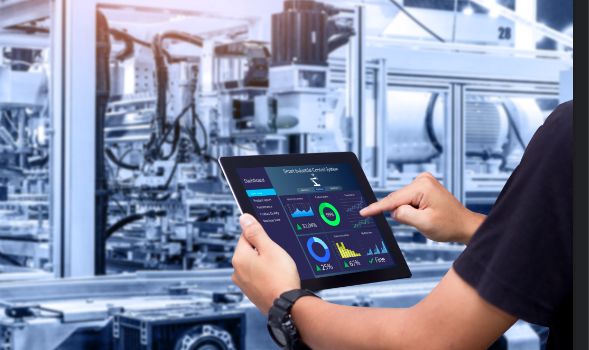Edge Computing: Revolutionizing Data Processing and Connectivity
Edge computing has emerged as a transformative technology that addresses these challenges by bringing data processing closer to the source of data generation. In this article, we will explore the concept of edge computing,

Introduction
In today's digital era, where data is generated and consumed at an unprecedented rate, traditional cloud computing architectures face significant challenges in terms of latency, bandwidth limitations, and data privacy. Edge computing has emerged as a transformative technology that addresses these challenges by bringing data processing closer to the source of data generation. In this article, we will explore the concept of edge computing, its benefits, applications, and the future implications it holds for various industries.

Understanding Edge Computing
Edge computing is a decentralized computing paradigm that enables data processing and analysis to occur near the source of data generation, rather than relying on centralized cloud servers. Unlike traditional cloud computing, where data is sent to a remote data center for processing, edge computing brings computing resources closer to the data source, such as IoT devices, sensors, or mobile devices.

The key idea behind edge computing is to reduce latency, improve real-time processing capabilities, and enhance overall system performance by leveraging local computing power. By pushing data processing closer to the edge of the network, edge computing enables faster response times, lower bandwidth requirements, and improved data privacy and security.
Benefits of Edge Computing
Edge computing offers a range of benefits that are driving its adoption across industries:
Reduced Latency:
By processing data locally at the edge, edge computing minimizes the latency associated with sending data to distant cloud servers. This is crucial for real-time applications that require instant response times, such as autonomous vehicles, industrial automation, and augmented reality.

Improved Reliability:
Edge computing enables distributed computing architecture, reducing the risk of single points of failure. Even if the cloud connectivity is lost, edge devices can continue to function independently, ensuring uninterrupted operation.
Bandwidth Optimization:
With the exponential growth of data, transmitting all data to the cloud for processing becomes impractical and costly. Edge computing allows data to be processed locally, reducing the volume of data that needs to be transmitted over the network and optimizing bandwidth usage.
Enhanced Data Privacy and Security:
Edge computing addresses data privacy concerns by keeping sensitive data locally and minimizing its exposure to potential security breaches. This is particularly important for industries dealing with sensitive data, such as healthcare and finance.
Scalability and Flexibility:
Edge computing allows for flexible and scalable deployments, as computing resources can be easily distributed and scaled based on the specific requirements of each edge location. This enables efficient utilization of resources and cost savings.

Applications of Edge Computing
Edge computing finds applications in various industries, revolutionizing the way data is processed and enabling innovative solutions. Some notable applications include:
Internet of Things (IoT):
Edge computing is a fundamental enabler of IoT deployments. By processing IoT data at the edge, it enables real-time analytics, local decision-making, and reduced latency for time-sensitive IoT applications, such as smart cities, industrial automation, and connected vehicles.
Autonomous Systems:
Edge computing plays a crucial role in autonomous systems, such as self-driving cars and drones. By processing data locally, these systems can make critical decisions in real-time, ensuring safety and efficiency.
Healthcare:
Edge computing in healthcare allows for real-time monitoring, analysis, and decision-making at the point of care. It enables remote patient monitoring, telemedicine, and personalized healthcare applications, improving patient outcomes and reducing the burden on healthcare systems.
Retail:
Edge computing is transforming the retail industry by enabling real-time inventory management, personalized customer experiences, and efficient supply chain operations. It allows retailers to process data from various touchpoints, such as point-of-sale systems and customer devices, at the edge, providing immediate insights and improving operational efficiency.
Smart Grids:
Edge computing is essential for the development of smart grids, enabling real-time monitoring, analysis, and control of energy distribution. Traditional power grids are undergoing a transformation to become smarter and more efficient, and edge computing plays a crucial role in this transition.

Future Implications of Edge Computing
Edge computing is expected to have a significant impact on various industries in the future. With the increasing adoption of IoT, 5G, and AI, edge computing will become an essential enabler of these technologies, allowing for efficient data processing and analysis.
Some of the future implications of edge computing are:
Increased Adoption of IoT:
As IoT devices become more prevalent, the need for efficient data processing and real-time analytics will continue to grow. Edge computing will be a critical enabler of IoT, allowing for efficient and secure data processing at the edge.
Advancement of AI:
Edge computing will also play a crucial role in the advancement of AI. With the increasing complexity of AI algorithms and the need for real-time inference, edge computing will enable faster and more efficient processing of AI models.
Autonomous Systems:
Edge computing will continue to be a key enabler of autonomous systems, such as self-driving cars and drones. As these systems become more prevalent, the need for efficient and real-time decision-making at the edge will become critical.
Increased Data Privacy and Security:
Edge computing will also play a vital role in addressing data privacy and security concerns. By keeping sensitive data local and minimizing its exposure to potential security breaches, edge computing will enable more secure and private data processing.

Improved Operational Efficiency:
Edge computing will enable more efficient and cost-effective data processing, leading to improved operational efficiency across various industries.
Conclusion
Edge computing is a transformative technology that is revolutionizing the way data is processed and analyzed. By bringing computing resources closer to the edge of the network, edge computing enables faster response times, improved reliability, bandwidth optimization, and enhanced data privacy and security. It finds applications in various industries, from IoT and autonomous systems to healthcare and retail. With the increasing adoption of IoT, 5G, and AI, edge computing is expected to become an essential enabler of these technologies, leading to more efficient and cost-effective data processing and improved operational efficiency




